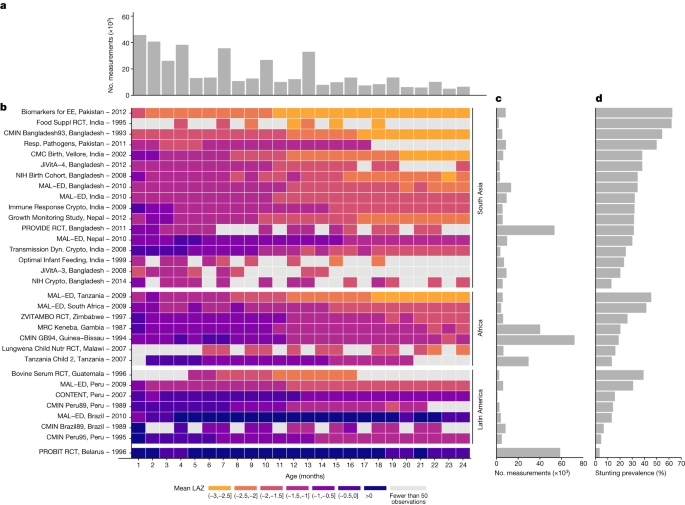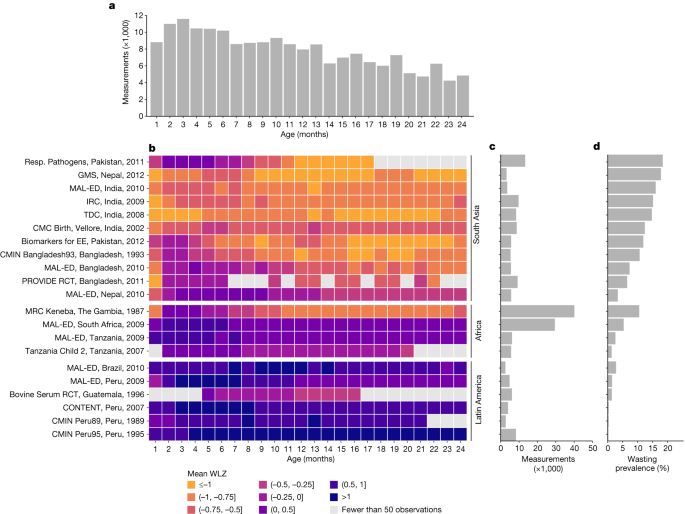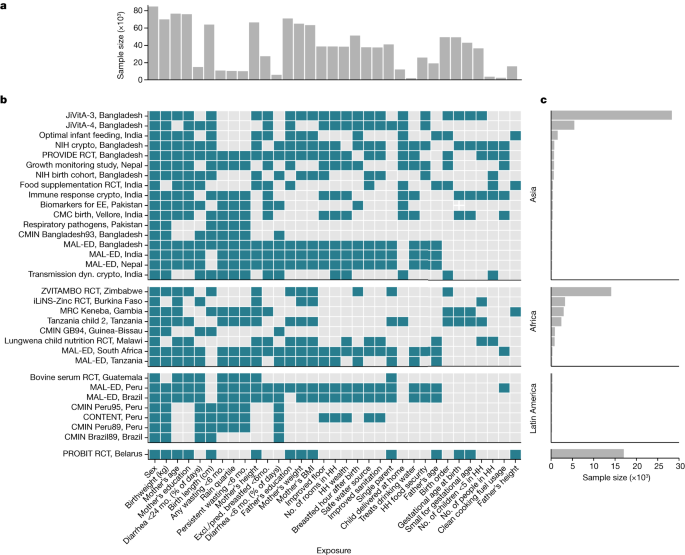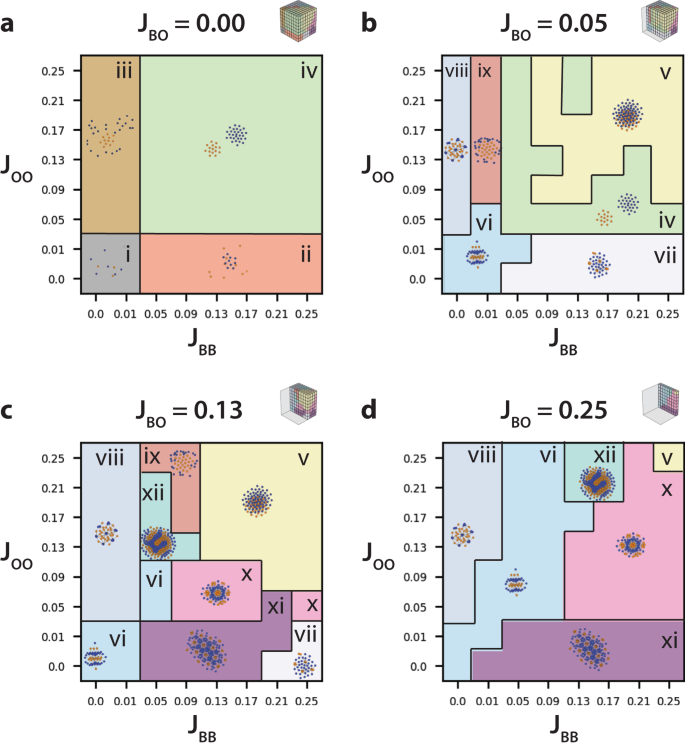2023-09-13 カリフォルニア大学バークレー校(UCB)
◆これらの論文は、生命の最初の2年間における成長の軌道に関する最大かつ包括的な調査であり、南アジアを含む世界の多くの子供たちにとって厳しい現実を浮き彫りにしています。
◆研究の一部では、成長遅滞と低体重の発生率に焦点を当て、別の論文ではこれらの問題の原因と結果に取り組んでいます。早期の成長遅滞が発生することは、介入の可能な期間が非常に早い時期であることを示唆し、特に出生前期と、出産年齢の女性の栄養を改善する幅広い介入を可能にするとのことです。
<関連情報>
- https://publichealth.berkeley.edu/news-media/research-highlights/early-malnutrition-sets-stage-for-poor-growth-and-even-death/
- https://www.nature.com/articles/s41586-023-06418-5
- https://www.nature.com/articles/s41586-023-06480-z
- https://www.nature.com/articles/s41586-023-06501-x
低・中所得国では幼児期の直線的な成長が遅れている Early-childhood linear growth faltering in low- and middle-income countries
Jade Benjamin-Chung,Andrew Mertens,John M. Colford Jr,Alan E. Hubbard,Mark J. van der Laan,Jeremy Coyle,Oleg Sofrygin,Wilson Cai,Anna Nguyen,Nolan N. Pokpongkiat,Stephanie Djajadi,Anmol Seth,Wendy Jilek,Esther Jung,Esther O. Chung,Sonali Rosete,Nima Hejazi,Ivana Malenica,Haodong Li,Ryan Hafen,Vishak Subramoney,Jonas Häggström,Thea Norman,Kenneth H. Brown,Parul Christian,Benjamin F. Arnold & The Ki Child Growth Consortium
Nature Published:13 September 2023
DOI:https://doi.org/10.1038/s41586-023-06418-5

Abstract
Globally, 149 million children under 5 years of age are estimated to be stunted (length more than 2 standard deviations below international growth standards)1,2. Stunting, a form of linear growth faltering, increases the risk of illness, impaired cognitive development and mortality. Global stunting estimates rely on cross-sectional surveys, which cannot provide direct information about the timing of onset or persistence of growth faltering—a key consideration for defining critical windows to deliver preventive interventions. Here we completed a pooled analysis of longitudinal studies in low- and middle-income countries (n = 32 cohorts, 52,640 children, ages 0–24 months), allowing us to identify the typical age of onset of linear growth faltering and to investigate recurrent faltering in early life. The highest incidence of stunting onset occurred from birth to the age of 3 months, with substantially higher stunting at birth in South Asia. From 0 to 15 months, stunting reversal was rare; children who reversed their stunting status frequently relapsed, and relapse rates were substantially higher among children born stunted. Early onset and low reversal rates suggest that improving children’s linear growth will require life course interventions for women of childbearing age and a greater emphasis on interventions for children under 6 months of age.
低・中所得国における子どもの発育阻害と発育不良 Child wasting and concurrent stunting in low- and middle-income countries
Andrew Mertens,Jade Benjamin-Chung,John M. Colford Jr,Alan E. Hubbard,Mark J. van der Laan,Jeremy Coyle,Oleg Sofrygin,Wilson Cai,Wendy Jilek,Sonali Rosete,Anna Nguyen,Nolan N. Pokpongkiat,Stephanie Djajadi,Anmol Seth,Esther Jung,Esther O. Chung,Ivana Malenica,Nima Hejazi,Haodong Li,Ryan Hafen,Vishak Subramoney,Jonas Häggström,Thea Norman,Parul Christian,Kenneth H. Brown,Benjamin F. Arnold & The Ki Child Growth Consortium
Nature Published:13 September 2023
DOI:https://doi.org/10.1038/s41586-023-06480-z

Abstract
Sustainable Development Goal 2.2—to end malnutrition by 2030—includes the elimination of child wasting, defined as a weight-for-length z-score that is more than two standard deviations below the median of the World Health Organization standards for child growth1. Prevailing methods to measure wasting rely on cross-sectional surveys that cannot measure onset, recovery and persistence—key features that inform preventive interventions and estimates of disease burden. Here we analyse 21 longitudinal cohorts and show that wasting is a highly dynamic process of onset and recovery, with incidence peaking between birth and 3 months. Many more children experience an episode of wasting at some point during their first 24 months than prevalent cases at a single point in time suggest. For example, at the age of 24 months, 5.6% of children were wasted, but by the same age (24 months), 29.2% of children had experienced at least one wasting episode and 10.0% had experienced two or more episodes. Children who were wasted before the age of 6 months had a faster recovery and shorter episodes than did children who were wasted at older ages; however, early wasting increased the risk of later growth faltering, including concurrent wasting and stunting (low length-for-age z-score), and thus increased the risk of mortality. In diverse populations with high seasonal rainfall, the population average weight-for-length z-score varied substantially (more than 0.5 z in some cohorts), with the lowest mean z-scores occurring during the rainiest months; this indicates that seasonally targeted interventions could be considered. Our results show the importance of establishing interventions to prevent wasting from birth to the age of 6 months, probably through improved maternal nutrition, to complement current programmes that focus on children aged 6–59 months.
低資源環境における子どもの成長遅れの原因と結果 Causes and consequences of child growth faltering in low-resource settings
Andrew Mertens,Jade Benjamin-Chung,John M. Colford Jr,Jeremy Coyle,Mark J. van der Laan,Alan E. Hubbard,Sonali Rosete,Ivana Malenica,Nima Hejazi,Oleg Sofrygin,Wilson Cai,Haodong Li,Anna Nguyen,Nolan N. Pokpongkiat,Stephanie Djajadi,Anmol Seth,Esther Jung,Esther O. Chung,Wendy Jilek,Vishak Subramoney,Ryan Hafen,Jonas Häggström,Thea Norman,Kenneth H. Brown,Parul Christian,Benjamin F. Arnold & The Ki Child Growth Consortium
Nature Published:13 September 2023
DOI:https://doi.org/10.1038/s41586-023-06501-x

Abstract
Growth faltering in children (low length for age or low weight for length) during the first 1,000 days of life (from conception to 2 years of age) influences short-term and long-term health and survival1,2. Interventions such as nutritional supplementation during pregnancy and the postnatal period could help prevent growth faltering, but programmatic action has been insufficient to eliminate the high burden of stunting and wasting in low- and middle-income countries. Identification of age windows and population subgroups on which to focus will benefit future preventive efforts. Here we use a population intervention effects analysis of 33 longitudinal cohorts (83,671 children, 662,763 measurements) and 30 separate exposures to show that improving maternal anthropometry and child condition at birth accounted for population increases in length-for-age z-scores of up to 0.40 and weight-for-length z-scores of up to 0.15 by 24 months of age. Boys had consistently higher risk of all forms of growth faltering than girls. Early postnatal growth faltering predisposed children to subsequent and persistent growth faltering. Children with multiple growth deficits exhibited higher mortality rates from birth to 2 years of age than children without growth deficits (hazard ratios 1.9 to 8.7). The importance of prenatal causes and severe consequences for children who experienced early growth faltering support a focus on pre-conception and pregnancy as a key opportunity for new preventive interventions.


